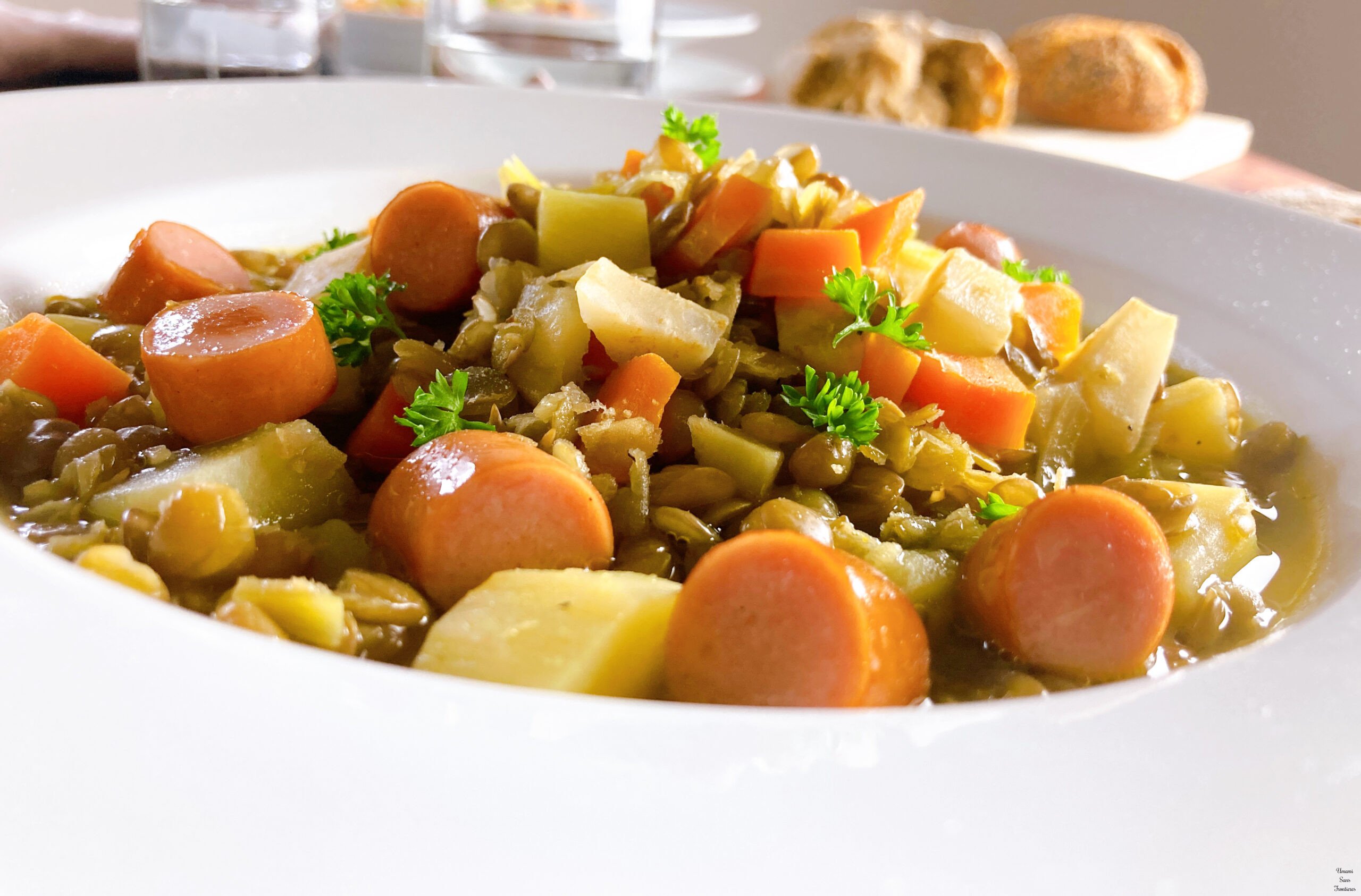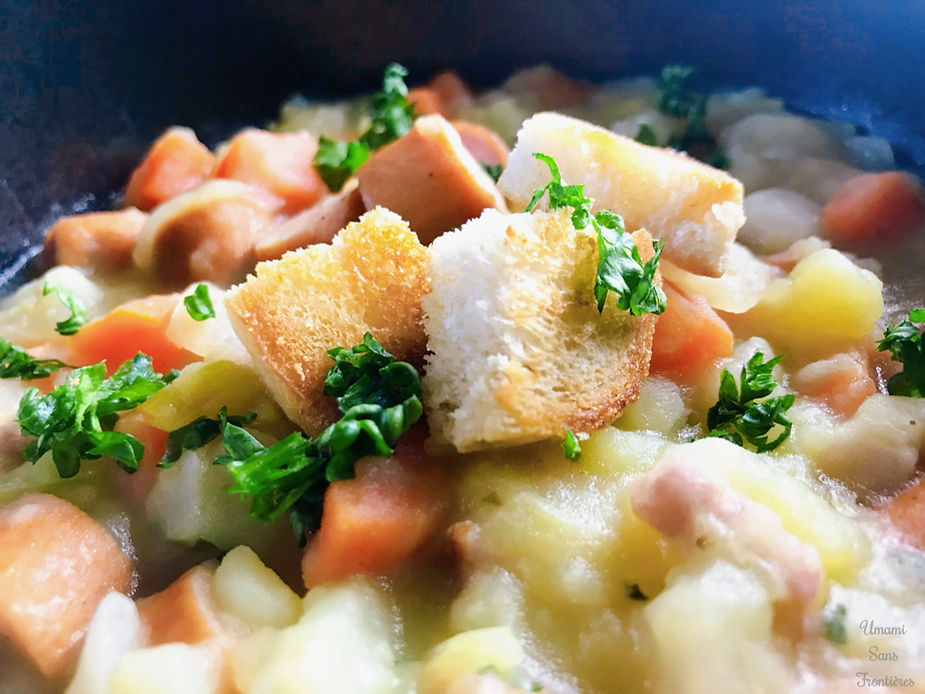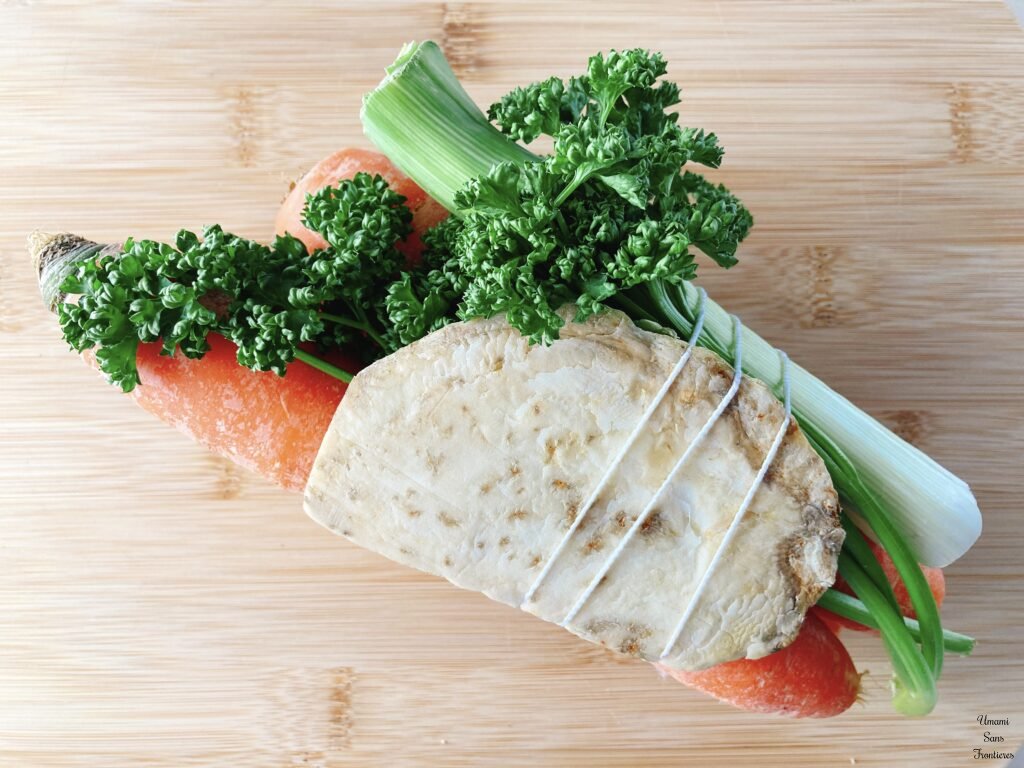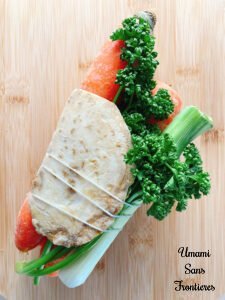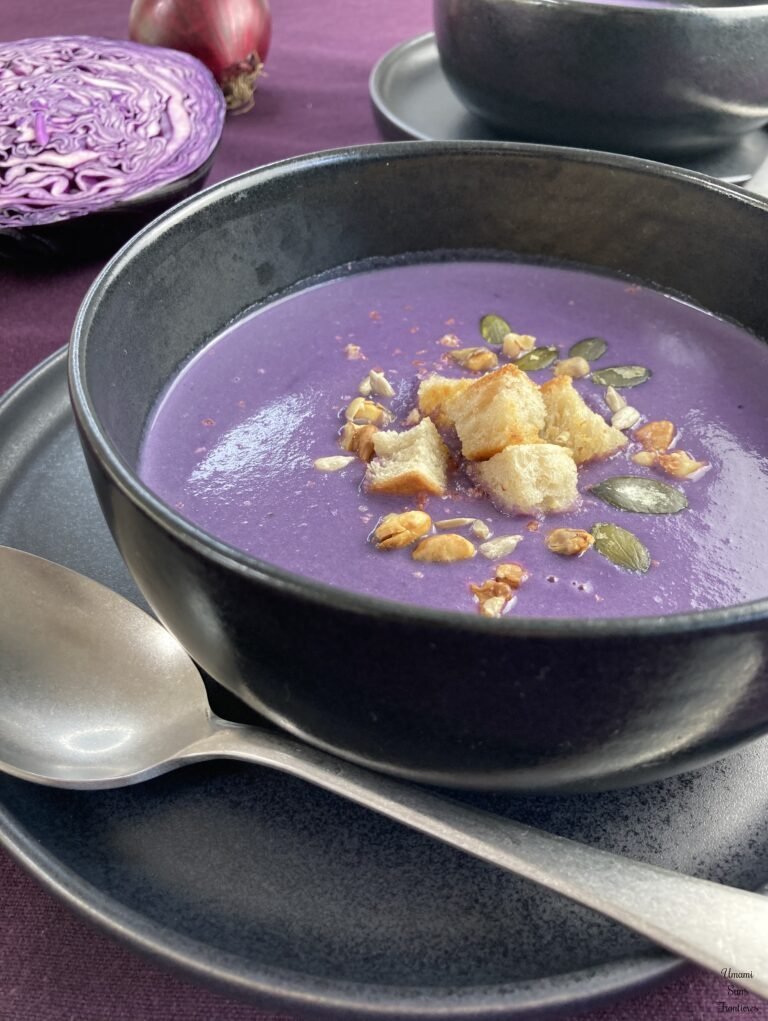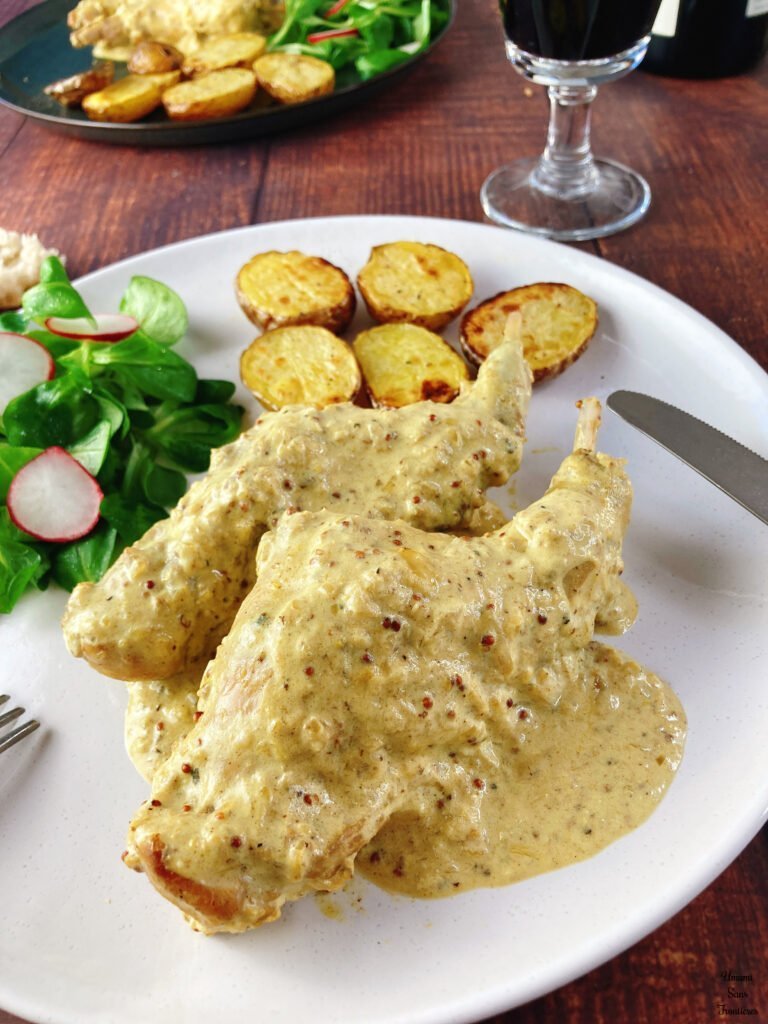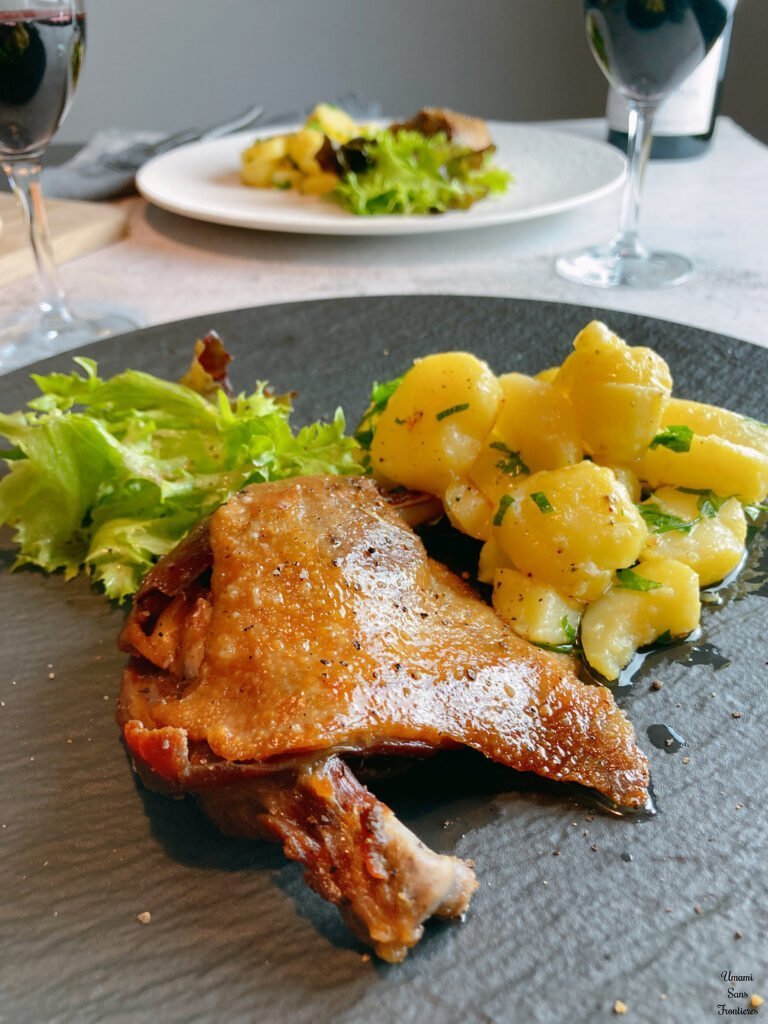My First Encounter with Suppengrün
When winter arrives in Germany, supermarkets showcase bundles of vegetables labeled Suppengrün, a convenient mix for soups. I still remember the first time I saw it: a rough, white vegetable caught my eye, and I wondered, “How do you even use this?” A bit of research revealed it was celeriac root (Knollensellerie)—a white, knobby vegetable I had never encountered in Japan, where celery stalks are far more common. At first, I walked past these bundles without a second thought.
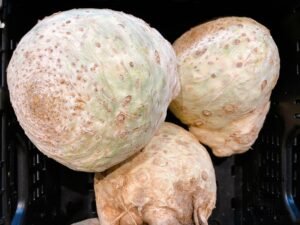
Fast forward to today: Suppengrün has become a staple in our household during the cold season. The warmth of homemade soup and the natural umami of these vegetables bring cozy comfort when temperatures drop. It reminds me of the curry vegetable sets I used to buy in Japan, which typically include potatoes, carrots, and onions.
Suppengrün is a ready-to-use vegetable mix designed for soups, stews, and sauces. Here in Berlin, it typically contains 🥕carrots, ⚪️celeriac root, 🥬leeks, and 🌿parsley. In southern Germany, you might find parsnips added, while in the north, kohlrabi sometimes makes an appearance. Its versatility goes beyond soups: these vegetables create a perfect aromatic base for slow-cooked dishes and sauces.
A Nutrient-Packed Vegetable Trio
Suppengrün is not only convenient but also nutritionally rich:
- Carrots: Packed with beta-carotene and fiber, they support immunity.
- Celeriac root: A great source of B vitamins and potassium, aiding in recovery and reducing bloating.
- Leeks: High in vitamin C and sulfur compounds, promoting better circulation.
- Parsley: Loaded with vitamin C and iron, it contributes to healthy skin and helps prevent anemia.
An added bonus: celeriac becomes milder and develops a potato-like texture when simmered. I was pleasantly surprised to find that even those who dislike celery find it enjoyable in soup.
Vegetable Sets Across Cultures
Germans aren’t the only ones who appreciate convenient veggie bundles. In Japan, you can find nabe (hot pot) sets with napa cabbage, mushrooms, and long green onions. 🇯🇵 France offers bouquet garni, a bundle of herbs like bay leaves and thyme for seasoning stews. 🇫🇷 Each country curates its vegetable sets to suit traditional dishes, giving us a glimpse into culinary culture through these simple yet practical combinations.
Our Family’s Favorite Soups
When winter rolls around, our family often makes two classic soups with Suppengrün:
- 🍲 Lentil Soup (Linsensuppe): A rustic, hearty dish where the celeriac’s aroma enhances the lentils’ earthy flavor.
- 🥔 Berlin-Style Potato Soup (Berliner Kartoffelsuppe): A mild, comforting soup in which the celeriac adds depth to the creamy texture.
Substituting Celeriac Root
In some countries, celeriac can be tricky to find. In Japan, for instance, I suggest using daikon radish or turnips instead. While these substitutes aren’t as aromatic, they lend a subtle sweetness when simmered. Adding a small amount of celery stalk also helps replicate the distinct flavor.
Warm Up with Soup This Winter!
German winters are no joke—I’ve learned that firsthand. A hot bowl of soup can feel like a hug from the inside, offering both nourishment and comfort. With Suppengrün, preparing a delicious homemade soup becomes effortless. Why not give it a try this winter? 🥣
Find the recipes here: Linsensuppe (Lentil Soup)and Berliner Kartoffelsuppe (Berlin-Style Potato Soup). Enjoy the warmth of a hearty, homemade soup with this simple, flavorful vegetable set! 😊